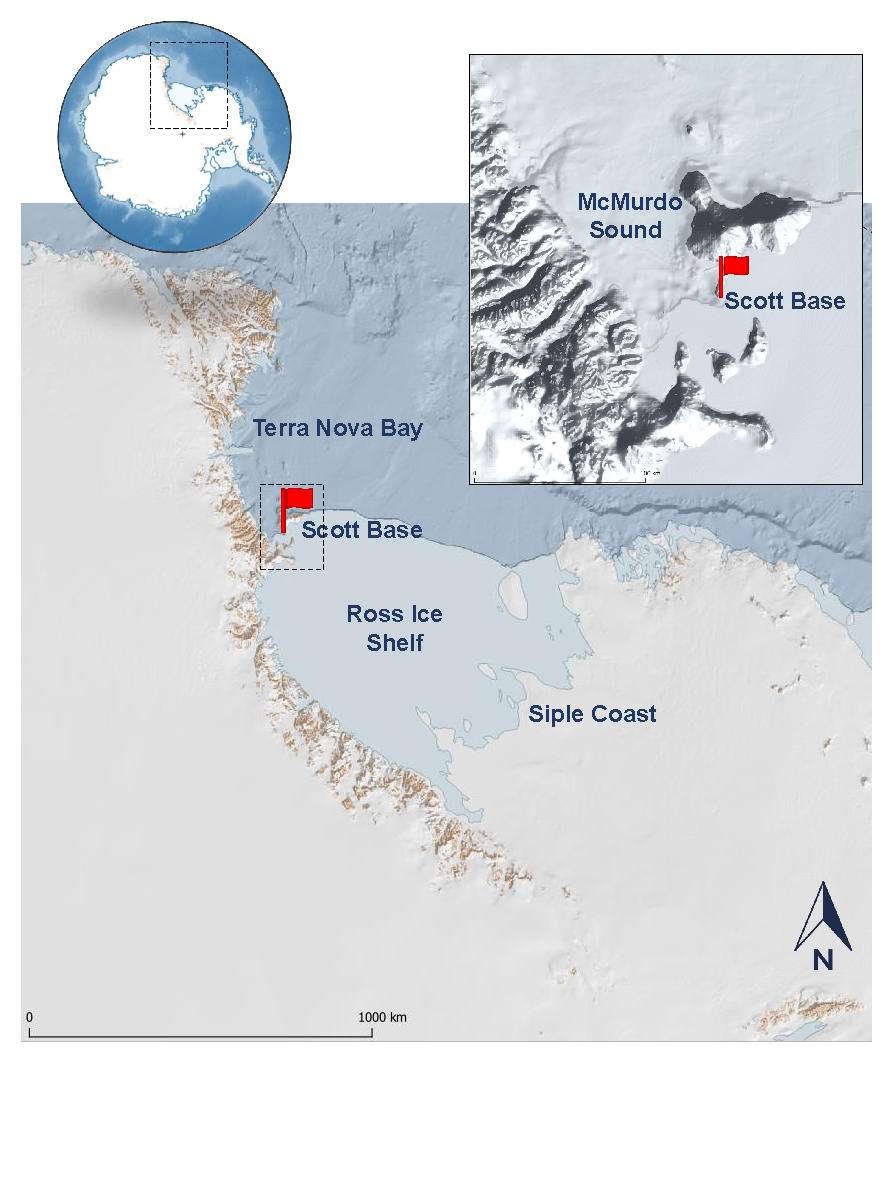Antarctica New Zealand


February, 2021
Despite a year impacted by COVID-19, Antarctica New Zealand was able to support a number of field-based science activities during the 2020/21 summer season.
Before deploying to the ice, everyone travelling south spent at least two weeks in Ice-olation in Christchurch. For some, due to weather delays this time in quarantine was much longer than 14 days! Our teams completed a number of significant achievements this season, including the continuation of valuable long-term scientific programmes, preparation for the rebuild of Scott Base, a successful overland traverse across the Ross Ice Shelf, and a scientific voyage in the Ross Sea aboard the RV Tangaroa.
Long-term monitoring
Scientists from NIWA travelled to Scott Base in November to maintain, calibrate and collect data from climate stations including temperature, wind, barometric pressure and solar radiation. These data are key to characterising and identifying changes to local climate, and identifying climate variations and changes. In addition, science technicians at Scott Base installed and retrieved a sea ice mass balance station in McMurdo Sound. The sea ice mass balance station records the growth, development, and decay of the sea ice, and builds on a continuous 20-year record of sea ice measurements. Sea ice plays an important role in Earth’s climate and global ocean circulation, and these data assist with understanding trends in sea ice changes through time.

Preparing for the redevelopment of Scott Base
Scott Base is the home on the ice for New Zealand scientists and support staff to carry out some of the most important research in the world. The redevelopment of Scott Base will see the existing base replaced by three large interconnected buildings, and the proposed new base would impact some of the long-term science experiments in the area. To ensure integrity of the long-term data sets is maintained throughout the redevelopment, Antarctica New Zealand and the science community have been working together to relocate affected experiments, with several critical tasks completed this summer. A team from GNS Science conducted a Geomagnetic Survey, a team from NIWA - together with assistance from the Scott Base crew - installed a new anemometer mast for measuring wind, University of Canterbury personnel explored relocation options for the Medium Frequency Radar experiment, and a team from Manaaki Whenua installed a new Soil Climate Station in the area north of Scott Base.
See here for more information on the Scott Base Redevelopment project.
Ross Ice Shelf Traverse
One of the biggest achievements this season was an overland logistics traverse across the Ross Ice Shelf. The traverse, consisting of three piston bullies travelling at speeds of 5 to 15 km per hour dragging sleds behind containing fuel and cargo, set off from Scott Base in early December, to the Siple Coast, nearly 1000 km south-east of Scott Base. The traverse was undertaken in preparation for the 2021/22 summer field season when a team will use hot water to drill through the Ross Ice Shelf, to sample the ocean cavity below and to obtain sedimentary cores from the sea floor.
During the traverse the team were also able to gather data from 27 weather stations and 100 Autonomous Phase-Sensitive Radar sites (ApRES; used to measure ice shelf thickness). The team returned back to Scott Base a few days ahead of schedule in mid-January.
Antarctic Voyage
A six-week voyage in the Ross Sea region of Antarctica was undertaken aboard the RV Tangaroa. The multi-disciplinary scientific cruise had wide-ranging objectives including retrieving and re-deploying scientific moorings that provide long-term data on oceanography, as well as data on whale, fish and krill distribution and abundance. The Antarctic Science Platform funded part of the voyage including objectives that focus on physical oceanography and how iron is used by phytoplankton. The voyage also included a rare opportunity for scientists to study the habitat and communities of the seafloor in Terra Nova Bay. The scientific objectives were achieved by a team of 20 scientists and 19 crew, providing further understanding on the environmental processes that govern the region, the potential impacts of climate change, and the effectiveness of the Ross Sea region Marine Protected Area.
Click here for more details on the voyage, including blog posts and photos!






